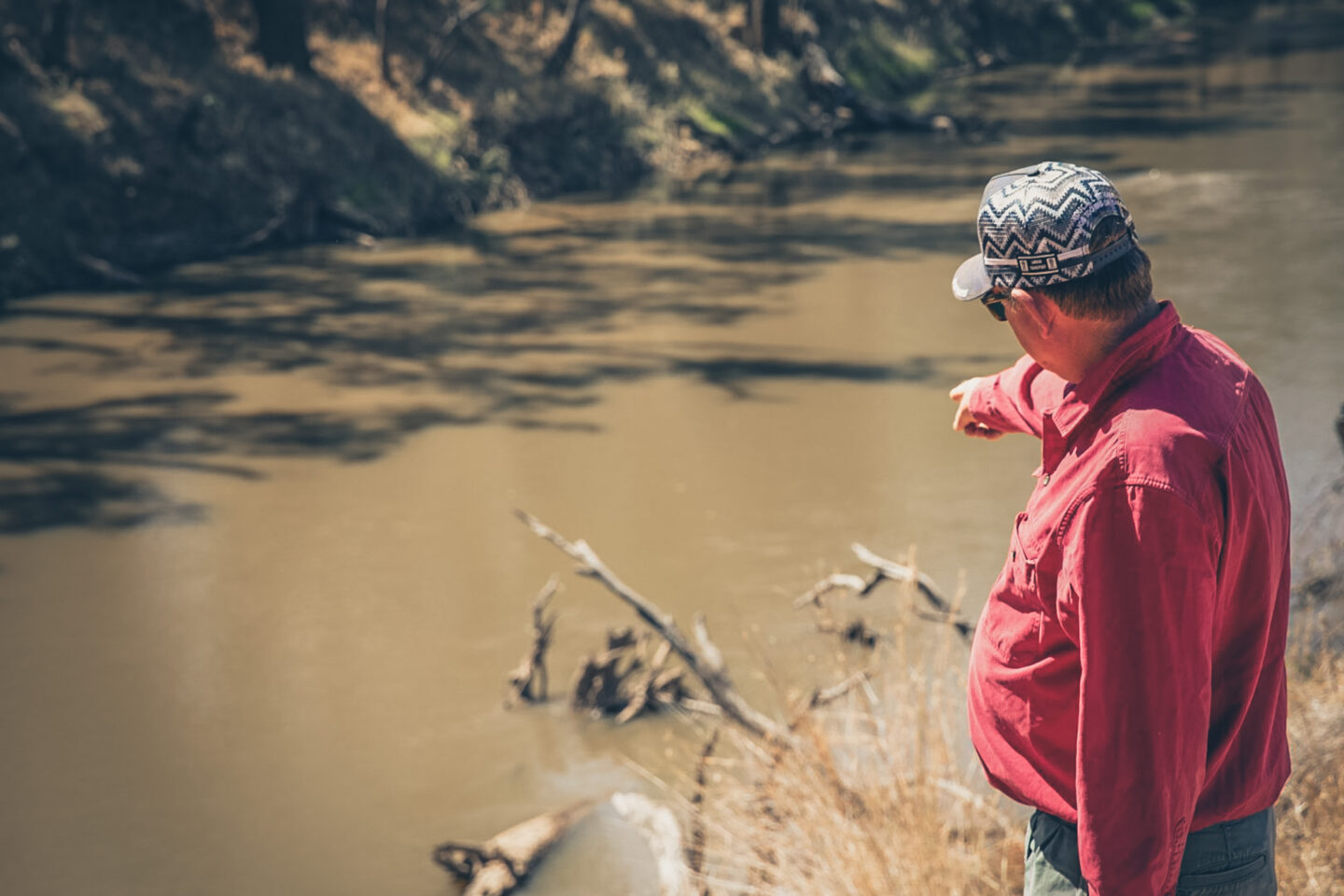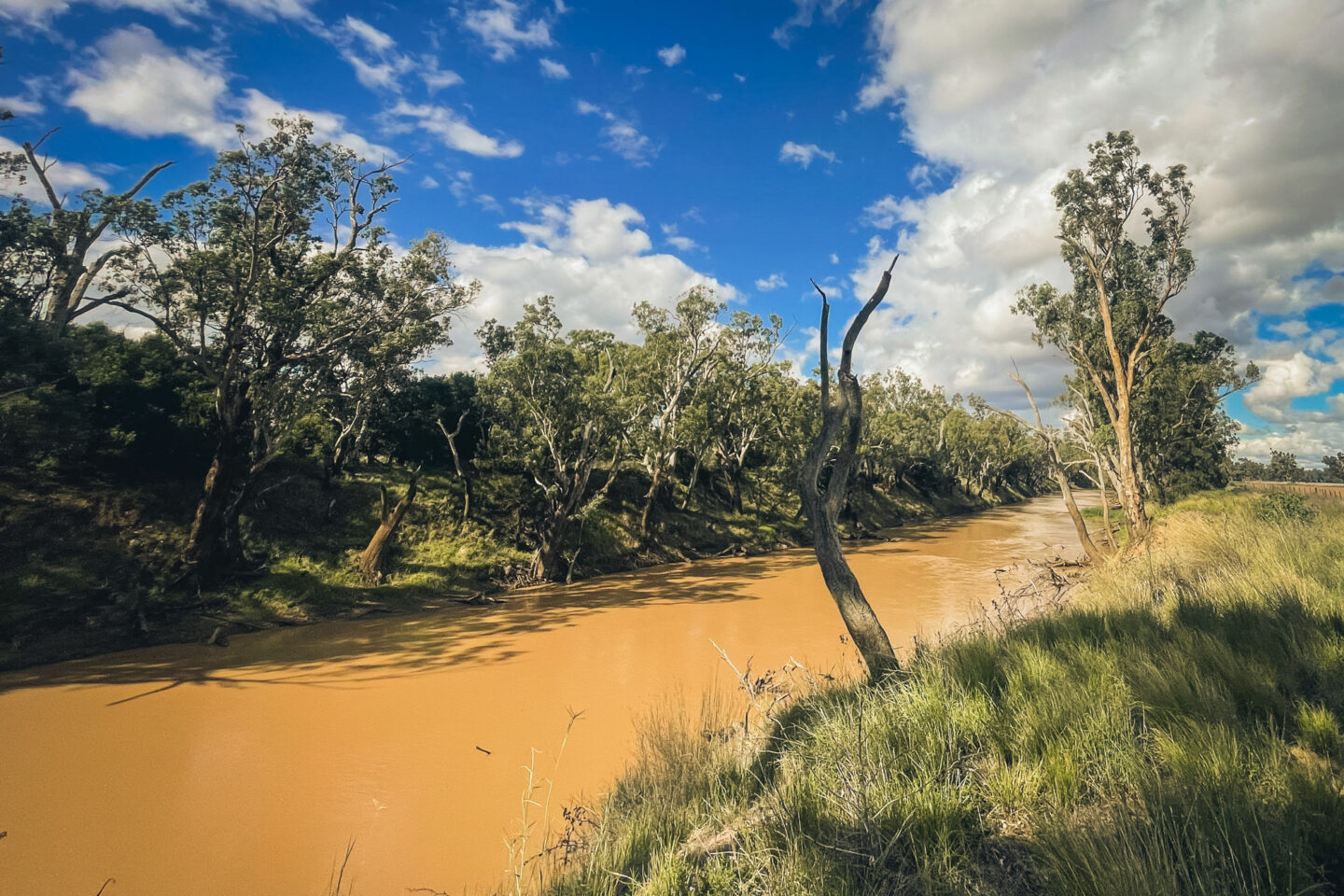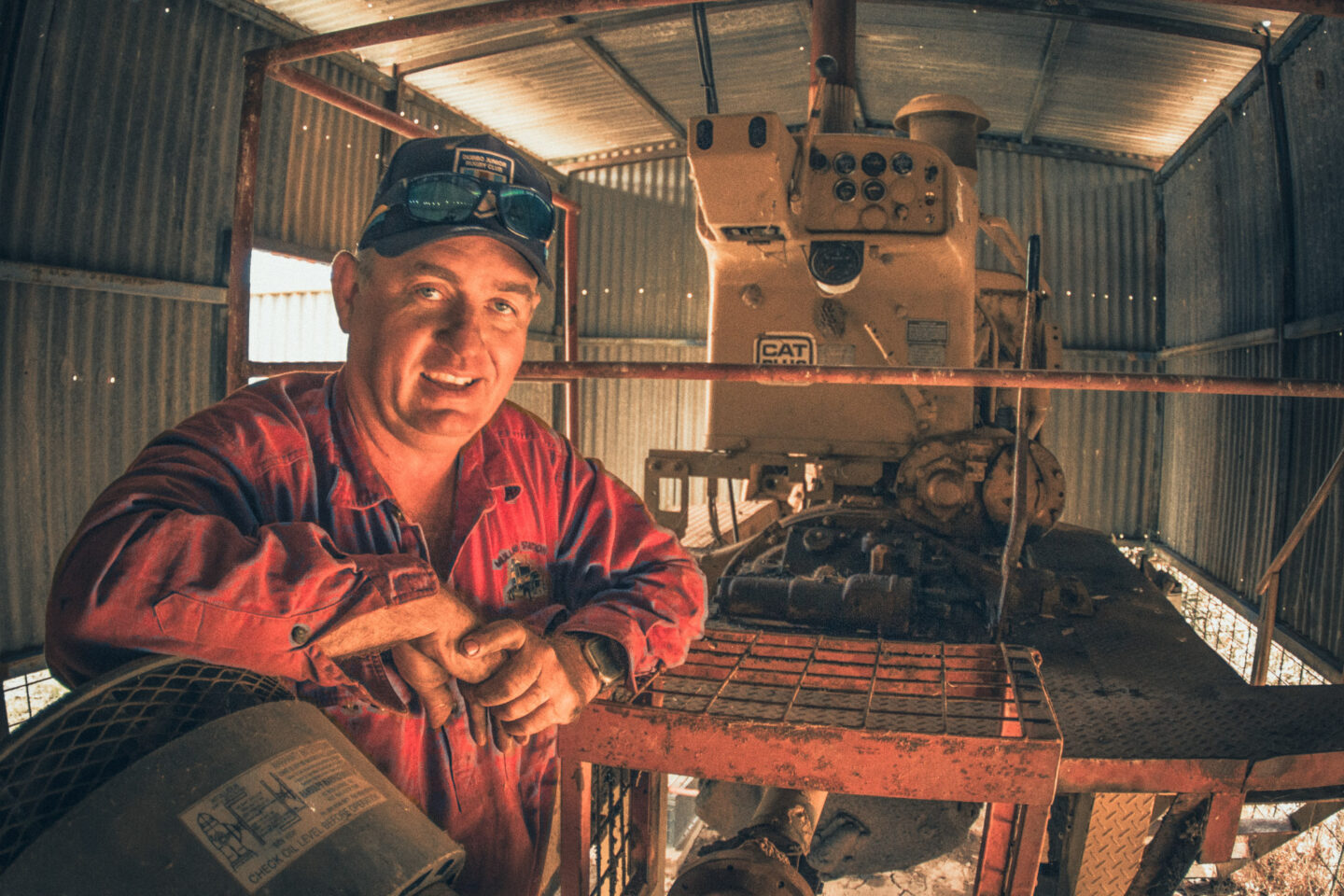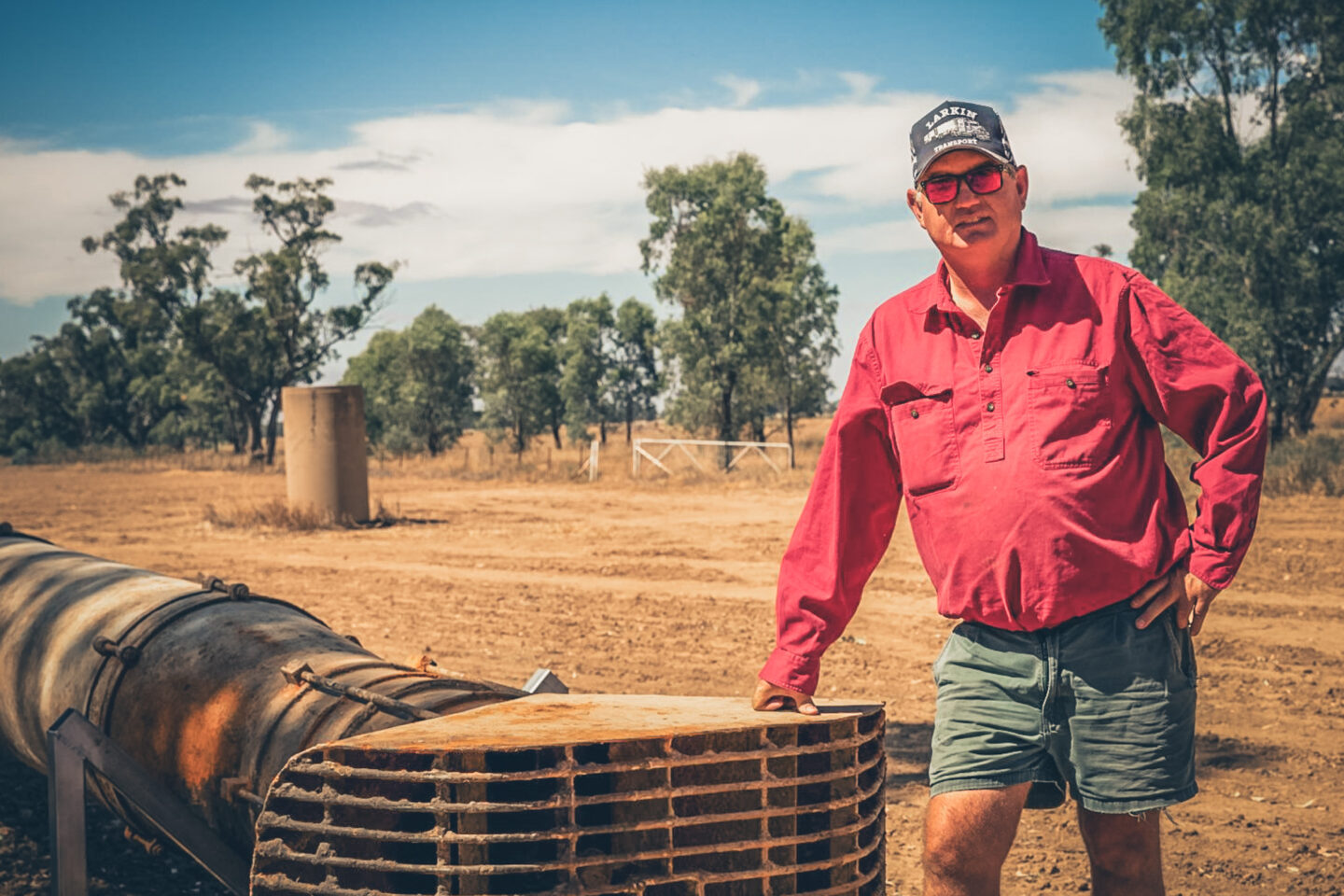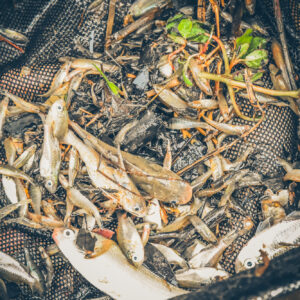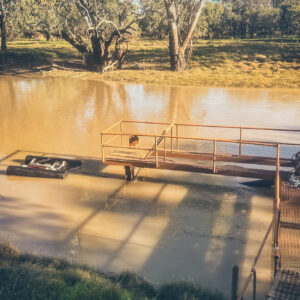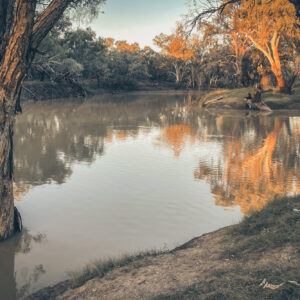Preparing for change: Jason McCutcheon on why his next step is a modern fish screen
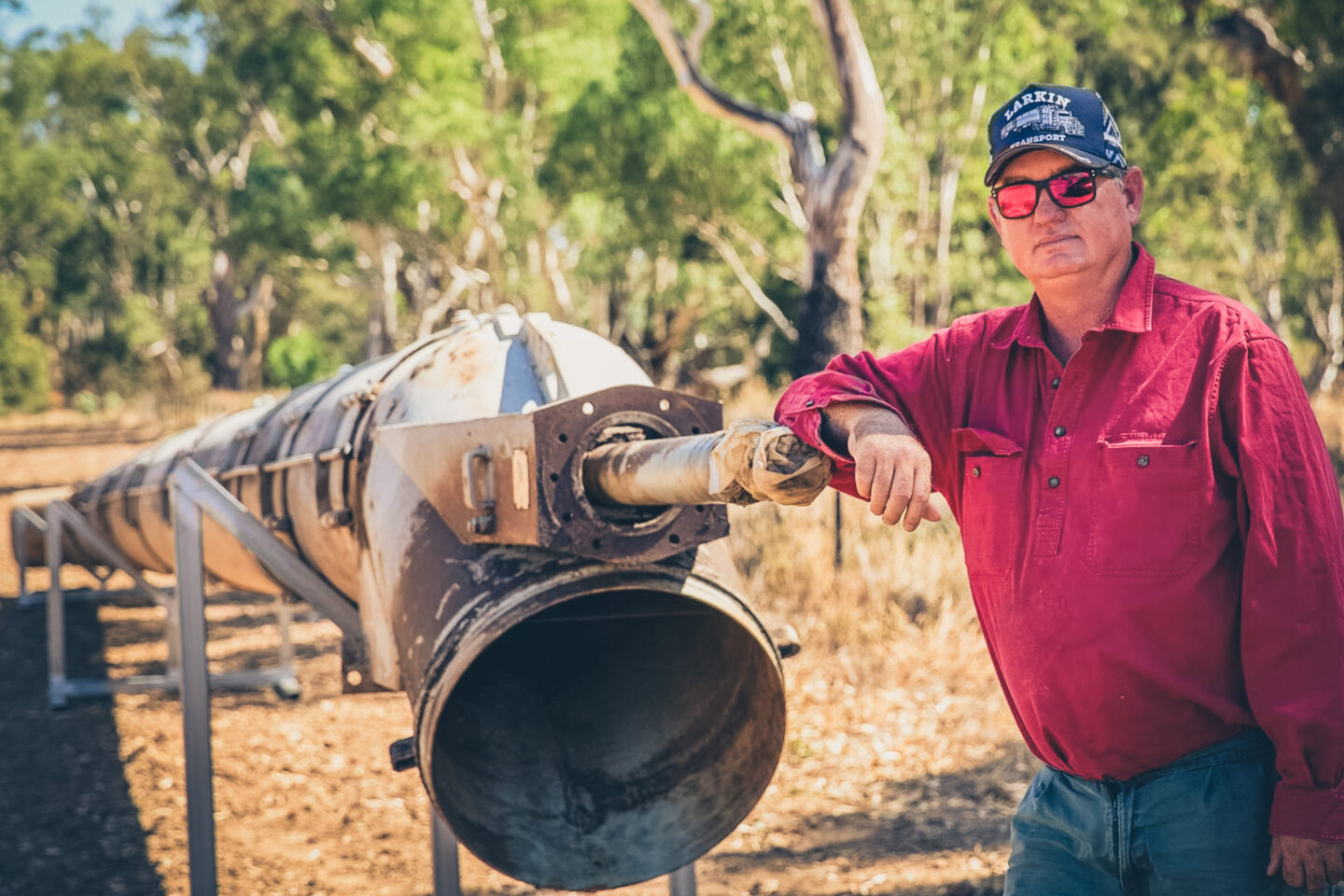
On the banks of the Macquarie River near Trangie, fourth-generation farmer Jason McCutcheon is standing beside his old irrigation pump. It’s out of the water and out of action—for now. But change is coming.
Jason’s been farming here his whole life, managing a family-run operation with cotton, wheat, oats, sheep, and cattle. His farm has relied on irrigation since 1966, drawing vital water from the river to sustain crops through hot, dry seasons. But as irrigation systems modernise, Jason is preparing to take a step that not only benefits his farm—but the river too.
The next upgrade? A self-cleaning modern fish screen.
Old Tech, Familiar Problems
The issues with Jason’s current pump setup aren’t uncommon. Big grates on the intake pipe allow water to flow, but they do little to stop debris—or protect native fish.
“I’ve seen this pump out of the water twice now,” Jason says. “And both times, there’s been a fish in the bottom bell end—about a 30–40cm Murray cod just sitting in there.”
The large gaps in the old grates let fish swim in, mistaking the area for a log or safe hiding place. But when the pump starts up, it’s a death sentence.
“As soon as I started that pump, he would’ve been the first fish to die,” Jason explains. “And that’s the reality of these old pumps—anything that can fit through the grates is treated like water and just gets sucked up.”
His pump moves around 70 megalitres of water a day. That kind of draw creates a strong suction field—one that fish simply can’t escape.
The Need for Change
While his current pump does the job, Jason knows it’s time for an upgrade—both for the sake of his farm’s infrastructure and the river that his family has called home for four generations.
“We rely on river water to irrigate our crops,” he says. “Rainfall isn’t great out here, so the river is everything. Having such a beautiful river right at your back door is priceless—and I think I’ve taken that for granted.”
Jason’s seen the damage firsthand. “It’s hard to tell how many fish get destroyed while your pump’s going. You can’t put a number on it. But if there’s one living in there, there’s more close by. While that pump’s running, you’re going to be sucking them in.”
That’s why, when the opportunity came to install a fish screen, he didn’t hesitate. “The fish screen is being made currently. It’ll be in by the end of June,” he says. “I’m really looking forward to having it fitted.”
Why a Fish Screen?
Modern fish screens are designed to prevent fish from being drawn into irrigation systems. With fine mesh and automated self-cleaning brushes, they allow water to pass freely while keeping fish, leaves, and other debris out. That means healthier rivers—and less maintenance.
For Jason, it’s a win on multiple fronts.
“Having the fish screen does have a dual purpose,” he says. “It eliminates the fish being sucked into the system, but also stops debris that would normally come through the pump and get pumped into my channels. So I’m getting cleaner, better quality water delivered to my farm.”
That cleaner water also translates to longer-lasting gear.
“Having better quality water go through your pump will prolong the life of my pump,” Jason explains. “Pulling pumps out and getting them remanufactured is quite expensive. If I can prolong how many years it runs, that’s obviously a big advantage to me.”
Biodiversity Matters
As someone who’s lived on the Macquarie his whole life, Jason is deeply aware of how much the river has changed over the years—and how important it is to protect what’s left.
“The decline in Murray cod in the last 50 years has been phenomenal. It’s gone downhill. But looking after them now is most important for our future generations.”
He adds: “If I can help out by putting a screen on the end of the pump—yeah, save the fish in the river, get cleaner water for the farm—it’s a win-win for everyone.”
The balance between agricultural productivity and ecological responsibility is something Jason takes seriously.
“As we farm, our end goal is making our farm profitable. But we also need to look after our rivers. That’s our lifeblood. If we can look after that for future generations, we have to.”
Anticipating the Upgrade
As Jason waits for the new screen to arrive, he’s optimistic about what’s to come—not just in terms of performance, but peace of mind.
“With the old pump, fish are drawn to it and they’ve got no hope but to go through it,” he says. “This new system is going to change that. It’s a small action that makes a big difference.”
While many farmers come to appreciate fish screens only after installation, Jason is already sold—because he’s lived the alternative.
“Everything that you can do to protect not only the river but also the fish that live in it—you’re going to do,” he says. “The fish are most important. We’ve got to protect them.”
One Step Toward a Healthier System
Jason McCutcheon isn’t just preparing for a technical upgrade—he’s helping shape a more sustainable future on the Macquarie. His story highlights what many irrigators across NSW are starting to realise: fish screens aren’t just good for the river, they’re good for business.
Cleaner water. Protected fish. Longer equipment life. Fewer maintenance headaches.
It all starts with that simple commitment to do things better.
“I’m really looking forward to seeing that river health improve,” Jason says. “It’s going to be a massive advantage to our community.”

